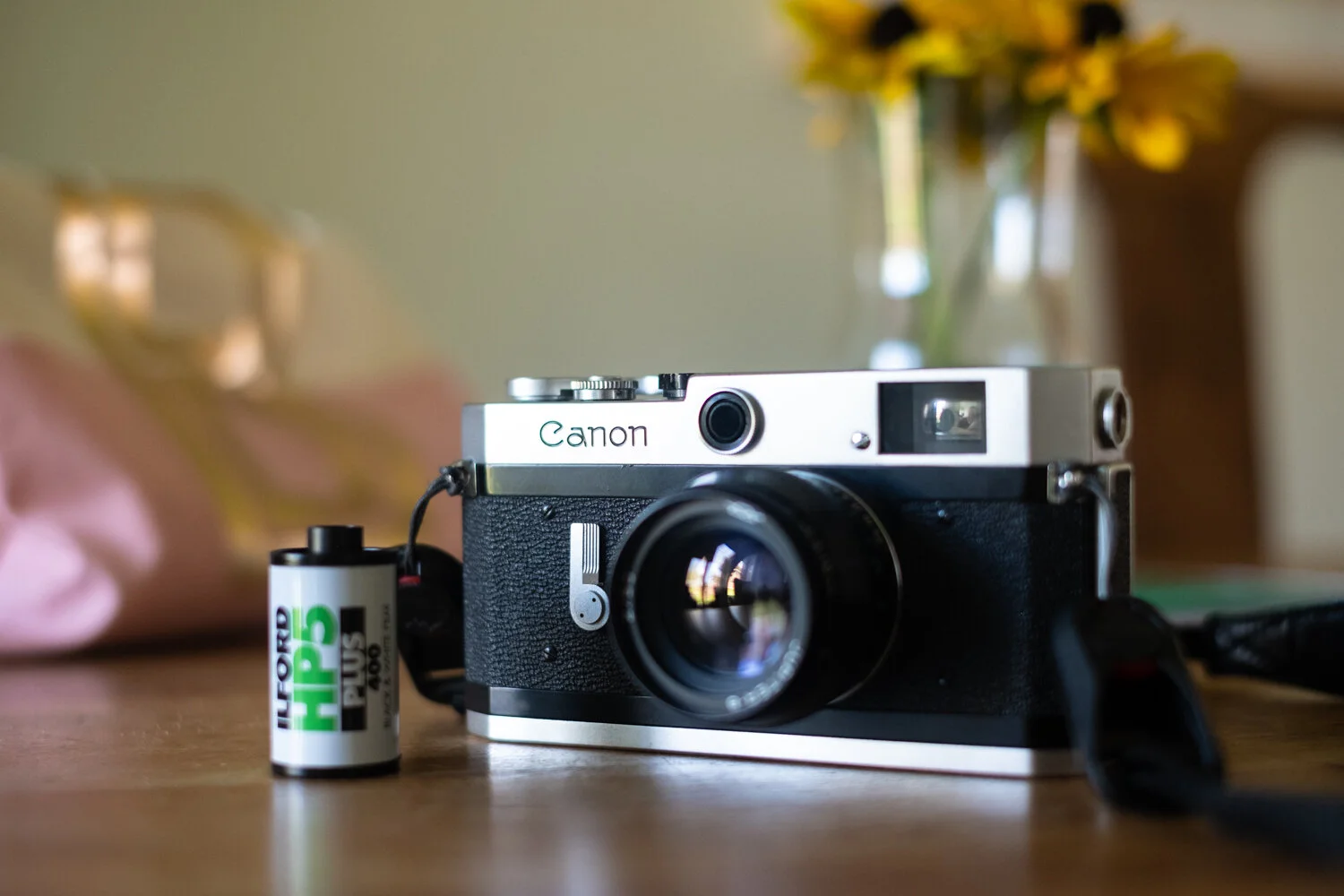P for ‘Populaire’
A test roll through my new Canon P that tells me I’m better than I thought at reading light or the latitude of Ilford HP5 can save the day.
Above–My Canon P 35mm rangefinder camera.
These days it doesn’t seem natural to shoot a camera without a built in light meter, analogue or digital. I’m not afraid to shoot without a meter and I can judge exposure fairly well, most of the time.
I find the ‘Sunny 16 rule’ a bit hit and miss, especially in our eccentric British climate. Maybe there should be a ‘Murky 1.4’ rule?
I have a metered prism on my Mamiya 645 but if I’m shooting expensive colour film on the RZ67 I break out my Sekonic light meter. Most of my other 35mm cameras are metered so no worries there.
I’m keen to try out my newly acquired Canon P. P for ‘Populaire’. A beautiful rangefinder from the late 50’s/early 60’s in near mint condition, even the shutter curtain is virtually wrinkle free, wrinkled shutter curtains are common on the Canon P.
The design is classic rangefinder, well built and reassuringly solid in the hand. It boasts clean lines and well thought out features such as the recessed rewind crank with it’s small machined oval spindle, clearly considered design.
Above–The rewind crank raised with its machined oval spindle.
Above—The viewfinder shows frame lines for 35mm, 50mm and 100mm lenses.
I’m loving the bright 1:1 viewfinder with super bright frame lines so I can keep both eyes open when framing and focusing. I also like the shutter speed dial, easily rotated with my shutter finger. Built to last and with a wrist strap attached it rests perfectly in my hand poised and ready to shoot.
I have a Jupiter 8 50mm f2 attached and a roll of Ilford HP5 loaded which I’ll be shooting at box speed.
Using my Sekonic light meter I took a reading in full sun, partial and full shade. So with film loaded, a range of aperture and shutter speeds logged in my head I started snapping.
I’ll be pushing my metering capabilities as the camera is sans-meter. A real test for me but I’m keeping the light meter in my pocket as a comfort blanket. I headed straight into the local Saturday market for a bit of fast paced street shooting as well as slower paced opportunities.
Walking around the bustling market I tried to balance my shutter speed so I could shoot as near to f16, zone focus focus and point and shoot. This worked well on the P as I could easily reach from the shutter release button to the shutter speed dial with my finger without looking. A not too firm click one way or the other from 500 to 250 or 1000. This is a strong feature particularly for faced paced street photography.
I picked a few regular spots so I could compare the shots with previous visits. I also took a few shots to test the camera, lens and the film in difficult lighting situations. Full sun and heavy shadows. I know this would be more a test of the latitude of the film but I want to get a benchmark for this camera and lens in tricky lighting situations.
I developed the roll in Ilfotec HC / 1+31 dilution for 6 1/2 minutes @ 20°C
Looking over the shots I can see that I was either lucky on all the exposures or I’ve just proven to myself how forgiving HP5 can be. The latitude and performance of this 400 speed classics is, well... classic.
Even though I metered for full sun, partial and full shade I know I strayed from the settings I logged in my head at the start, fumbling for apertures or shutter speeds I thought would work.
I’ll be shooting without a light meter more with this Canon P, trusting my own inbuilt light metering abilities.
But if that fails at least I know HP5 has got my back.
~ Mark



